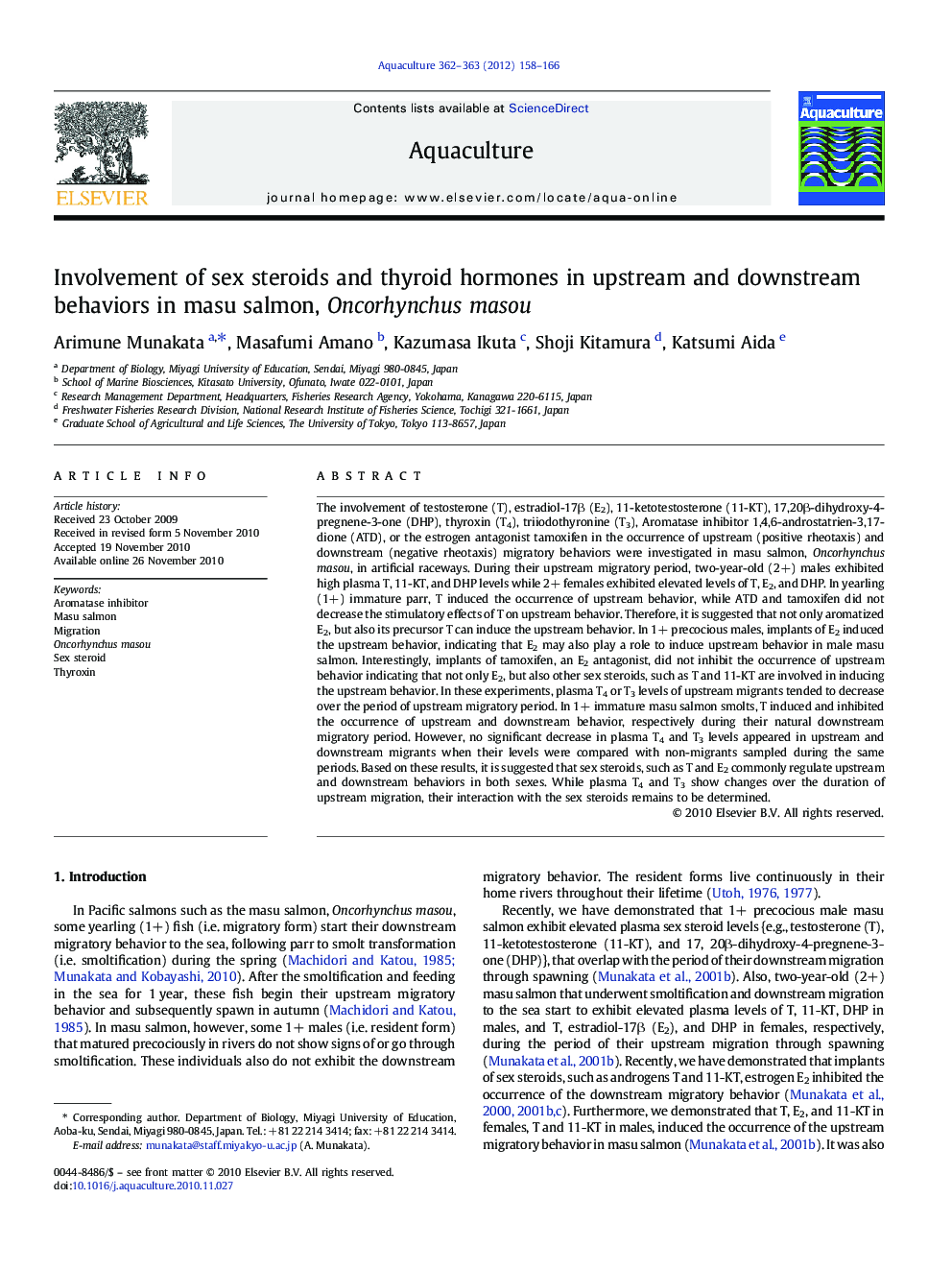| Article ID | Journal | Published Year | Pages | File Type |
|---|---|---|---|---|
| 2422334 | Aquaculture | 2012 | 9 Pages |
The involvement of testosterone (T), estradiol-17β (E2), 11-ketotestosterone (11-KT), 17,20β-dihydroxy-4-pregnene-3-one (DHP), thyroxin (T4), triiodothyronine (T3), Aromatase inhibitor 1,4,6-androstatrien-3,17-dione (ATD), or the estrogen antagonist tamoxifen in the occurrence of upstream (positive rheotaxis) and downstream (negative rheotaxis) migratory behaviors were investigated in masu salmon, Oncorhynchus masou, in artificial raceways. During their upstream migratory period, two-year-old (2+) males exhibited high plasma T, 11-KT, and DHP levels while 2+ females exhibited elevated levels of T, E2, and DHP. In yearling (1+) immature parr, T induced the occurrence of upstream behavior, while ATD and tamoxifen did not decrease the stimulatory effects of T on upstream behavior. Therefore, it is suggested that not only aromatized E2, but also its precursor T can induce the upstream behavior. In 1+ precocious males, implants of E2 induced the upstream behavior, indicating that E2 may also play a role to induce upstream behavior in male masu salmon. Interestingly, implants of tamoxifen, an E2 antagonist, did not inhibit the occurrence of upstream behavior indicating that not only E2, but also other sex steroids, such as T and 11-KT are involved in inducing the upstream behavior. In these experiments, plasma T4 or T3 levels of upstream migrants tended to decrease over the period of upstream migratory period. In 1+ immature masu salmon smolts, T induced and inhibited the occurrence of upstream and downstream behavior, respectively during their natural downstream migratory period. However, no significant decrease in plasma T4 and T3 levels appeared in upstream and downstream migrants when their levels were compared with non-migrants sampled during the same periods. Based on these results, it is suggested that sex steroids, such as T and E2 commonly regulate upstream and downstream behaviors in both sexes. While plasma T4 and T3 show changes over the duration of upstream migration, their interaction with the sex steroids remains to be determined.
